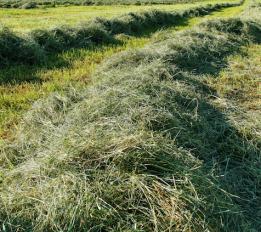FERTILIZE HAY GROUND TO MAXIMIZE CROP VALUE
Apr 13, 2021

“Hay has been a very high value crop in recent years,” said Craig Loen, Federated agronomist at the Osceola location. A consistent fertilizer plan helps capitalize on the quality and quantity of each crop, which in turn maximizes ROI, and “can help the bottom line of your operation,” Loen said.
Begin with a current soil test to enable accurate fertilizer recommendations. Without a test, it’s impossible to determine what the previous crop took out of the soil. “Most people don’t realize how much fertilizer [hay] needs,” said Duane Droogsma, Federated agronomist at the Rush City location.
Good fertility, plant health, seed vigor, and disease resistance can all be traced back to good fertilization. And for hay, “the lifespan of the stand is better with good fertility,” said Droogsma.
The cost of fertilizer will be offset by the improved quantity and quality of the hay, even at the recommended rates. Droogsma noted that the majority of growers fall far short of applying adequate amounts of fertilizer.
For hay stands with 50% or more grass along with some alfalfa, add urea and ammonium sulfate (AMS) in the early spring, said Loen. Add other nutrients to the mix based on the soil test results.
- - Urea increases protein, which translate into increase feed value.
Feed hay fields this spring, and then again after each cutting to maximize quality and yield potential.
- - Grass hay will be finer stemmed, more palatable to livestock, and will have more feed value overall. Higher quality – thanks to well-fertilized soils – translates to less feed per animal while providing the same nutritive value.
Your local Federated Agronomist is ready to help you “work out a good blend of fertilizer for your high value hay crop,” said Loen. Call soon.